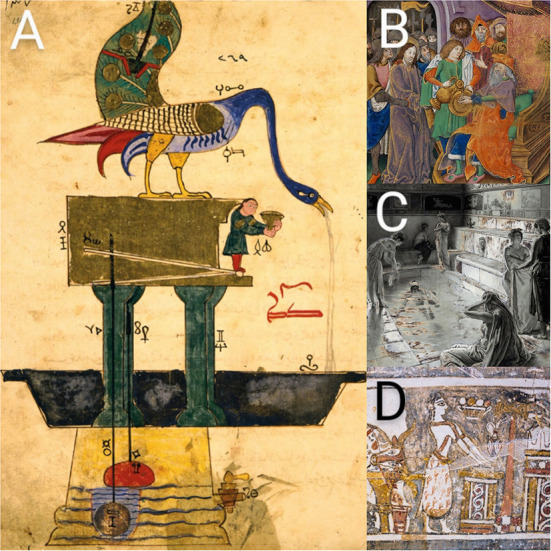Figure 1.

(A) The Book of Knowledge of Ingenious Mechanical Devices (1206) by the Mesopotamian polymath Ibn al-Razzāz al-Jazari (1136–1206), depicts a peacock basin automaton for ritual hand washing. We do not know with certainty that al-Jazari's device was ever actually constructed. Photo courtesy of the Cleveland Museum of Art. (B) Handwashing was also associated with the removal of sin and misfortune. The Peniarth Manuscript ca. 1503 depicts Christ before Pilate, with Pilate washing his hands (MS 481D). Photo courtesy of the National Library of Wales. (C) The Roman bath in the Strand, London, as used in the time of the Roman occupation of Britain. Colored pencil drawing by Fortunino Matania from 1922. (D) The unique representation on the Hagia Triada Sarcophagus (ca. 1400 BCE) depicts ritual handwashing after sacrificing a bull.
